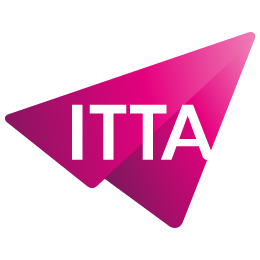This three-day course provides participants with the knowledge and skills to master Microsoft Project. This tool is recognized for its ability to structure, plan, and monitor projects of any size. Mastery of the software makes it possible to efficiently manage resources, deadlines, and costs. This training offers a complete and progressive approach, suitable for both beginners and users looking to strengthen their practices.
The Microsoft Project training provides a clear understanding of the interface and the main features of the software. Participants learn how to create a project, define tasks, and plan the necessary resources. They also acquire methods to properly assign resources to activities and ensure rigorous progress tracking. Each concept is illustrated with practical examples to enhance efficiency and productivity.
Module 1: Overview of project management
Module 2: Overview of Microsoft Project
Module 3: Defining a project
Module 4: Preparing project tasks
Module 5: Preparing project resources
Module 6: Assigning resources to tasks
Module 7: Optimizing the project plan
Module 8: Presenting and reporting on the project (views, reports, and visual reports)
Module 9: Executing the project
Module 10: Monitoring the project (variance analysis, plan revision, and change control)
Module 11: Closing the project
Module 12: Consolidating multiple projects
In a professional context where managing deadlines and resources is crucial, Microsoft Project stands out as an essential tool. Its use goes far beyond a simple planning software. It helps structure an entire project, identify priorities, and maintain a clear vision of progress. A Microsoft Project training therefore gives professionals the ability to fully leverage this tool and improve efficiency in their daily organization.
One of the most valued advantages of Microsoft Project is its ability to provide an overall view. Planning tables and Gantt charts help quickly visualize critical tasks and dependencies between activities. With strong command of the software, project managers have reliable indicators to track variances between forecasts and actual results. This makes it possible to anticipate delays and implement corrective actions at the right time.
Assigning the right resources to the right tasks remains a major challenge in any project. Microsoft Project offers powerful features to manage availability, costs, and workloads. Trained users know how to distribute efforts in a balanced way, which reduces the risk of overload. A Microsoft Project course also teaches how to use automatic leveling tools, reducing allocation conflicts and improving productivity.
The success of a project often depends on the ability to make quick and informed decisions. Microsoft Project includes monitoring and analysis features that make this process easier. Generated reports provide clear information on costs, deadlines, and resource usage. Managers can then adjust their strategies and better justify their choices to stakeholders. A dedicated training also teaches how to customize these reports to meet specific needs.
Many organizations now work on several projects simultaneously. Microsoft Project allows consolidating these projects and centralizing resource sharing. This approach offers better coordination and a global view of company priorities. Being trained in these advanced features is a real advantage for portfolio managers or program coordinators.
Microsoft Project integrates with other Microsoft ecosystem solutions such as Excel, Visio, or Teams. This interoperability strengthens collaboration and facilitates information sharing among teams. A Microsoft Project course covers these practical aspects and shows how to leverage these integrations to streamline teamwork. In this way, the tool becomes a true central hub of project management.
A professional training emphasizes real-life cases. Participants practice creating a project from start to finish, defining tasks, planning resources, and analyzing variances. This pragmatic approach helps acquire habits directly applicable in the workplace. Best practices shared by instructors further strengthen participants’ confidence and autonomy.
What are the prerequisites for this course?
It is recommended to have some knowledge of project management and basic experience with office tools. These skills make it easier to understand the concepts covered.
Who is the Microsoft Project training for?
It is intended for project managers, team leaders, planners, as well as staff involved in operational monitoring of activities. Any professional looking to structure and optimize their organization will benefit.
What tangible benefits can be expected after the course?
Participants leave with enhanced ability to plan, track, and analyze their projects. They know how to use Microsoft Project features to effectively manage time, resources, and costs.
Does the training cover multi-project management?
Yes, the program includes a section on consolidating multiple projects and sharing resources. This aspect is essential for organizations managing complex project portfolios.
Is Microsoft Project suitable for small businesses?
Yes, the tool adapts to both large-scale and smaller projects. Its flexibility makes it a solution usable by SMEs as well as large enterprises.

Nous utilisons des cookies afin de vous garantir une expérience de navigation fluide, agréable et entièrement sécurisée sur notre site. Ces cookies nous permettent d’analyser et d’améliorer nos services en continu, afin de mieux répondre à vos attentes.
Monday to Friday
8:30 AM to 6:00 PM
Tel. 058 307 73 00
ITTA
Route des jeunes 35
1227 Carouge, Suisse
Monday to Friday, from 8:30 am to 06:00 pm.